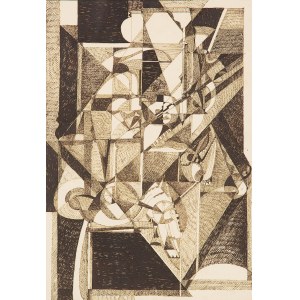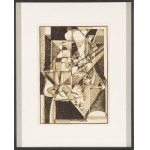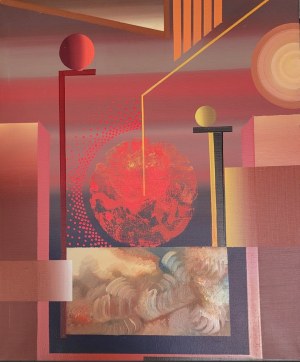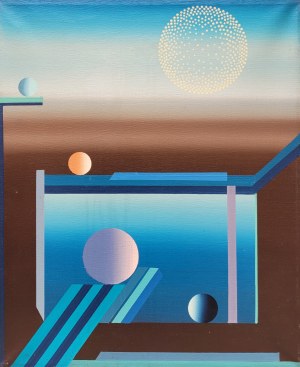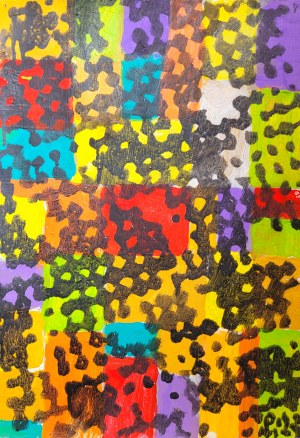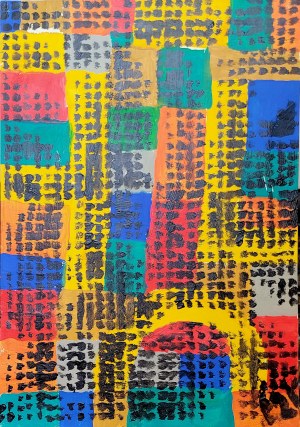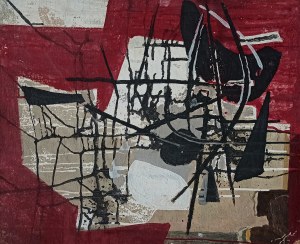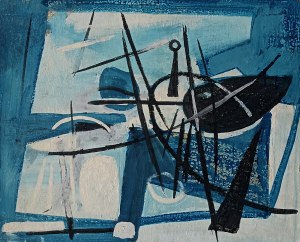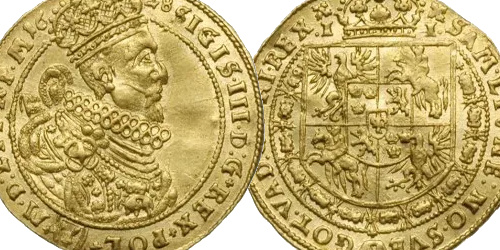OTTO ERICH WAGNER*
(Klepacov 1895 - 1979 Vienna)
Kinetic Composition
indian ink/paper, 37,5 x 26,5 cm
depicted in exchibition catalogue Dynamik! Kubismus, Futurismus, Kinetismus, Belvedere Vienna 2011, p. 107
Provenance: private collection Vienna
ESTIMATE € 3.000 - 6.000
START € 3.000
Austrian artist of the 20th century. Representative of the Viennese avant-garde, non-objective painting and kinetism. Studied at the School of Applied Arts from 1922 under Franz Cizek and Rudolf Larisch. Worked as a painter and graphic artist, also assistant teacher at Cizek's class for general theory of forms. Member of the Vienna Secession. Influenced by Cubism and Futurism, including artists such as Giacomo Balla, El Lissitzky, Johannes Itten, and Robert Delaunay. Counts among the Viennese Kinetists as do Erika Giovanna Klien, Peter Tölzer, Paul Kirnig, Elisabeth Karlinsky, Georg Anton Adams-Teltscher, Gertraud Brausewetter, Margarete Hamerschlag, Erika Giovanna Klien, Elisabeth Karlinsky, Paul Kirnig, Friedericke Nechansky, Gertrude Neuwirth, Ernst Anton Plischke, Johanna Reismayer, Ludwig Reutterer, Leopold Wolfgang Rochowanski, Emil Stejnar, Hertha Sladky, Harry Täuber, Gertrude Tomaschek, My Ullmann, Stella Weissenberg.
Otto Erich Wagner, who came from Klepacov-Blansko in Moravia, graduated from the Teacher Training College in Vienna between 1919 and 1923 and also took classes at the Vienna School of Applied Arts from 1922 to 1924 with Franz Cižek and Rudolf Larisch. Together with Elisabeth Karlinsky, Erika Giovanna Klien, My Ullmann, Karl Steiner and Alois Wachsmann - to name just a few of the main representatives - he was one of the abstract artists in Austria in the interwar period. Those who dealt with abstraction during this period were mostly punished with disregard, as the doctrine of representationalism dominated the domestic art scene. It was thanks to the teaching of Franz Cižek and his course in ornamental form theory that the tendencies towards abstraction, which had already begun in France and Italy before the First World War, were now also seriously considered in Austria as a stylistic alternative to the prevailing representational mode of representation. Otto Erich Wagner, who was a friend of Egon Schiele and only became a member of the Vienna Secession in 1949, rose to become one of the most important representatives of Viennese Kinetism. This dominant Viennese art movement of the 1920s was based on Italian Futurism and attempted to translate movement rhythms and sounds into the two-dimensionality of the picture plane. The term "kinetism" is derived from the Greek kinesis, meaning movement, and was first used in 1922. However, because very few of Cižek's students went on to work in the Vienna workshops or other companies, this art movement disappeared from the scene again a few years later, also for reasons of contemporary politics. Thus, in Wagner's kinetic oeuvre, inspiration from the art of Giacomo Balla, Johannes Itten, Franz Marc, Picasso and Kandinsky, Robert Delaunay or El Lissitzky repeatedly shimmers through. The virtuosically abstracted sheet makes it particularly clear how closely some kinetists oriented themselves to those geometric-abstract forms that in Cubism break down phenomena of the visible world into arbitrary components and in Futurism translate the experiences of movement and rhythm into a pictorial language.
PLEASE NOTE:
The purchase price consists of the highest bid plus the buyer's premium, sales tax and, if applicable, the fee of artists resale rights. In the case of normal taxation (marked ° in the catalog), a premium of 24% is added to the highest bid. The mandatory sales tax of 13% is added to the sum of the highest bid and the buyer's premium. The buyer's premium amounts to 28% in case of differential taxation. The sales tax is included in the differential taxation.
Paskutiniai peržiūrėti
Prisijunkite, jei norite pamatyti pozicijų sąrašą
Mėgstami
Prisijunkite, jei norite pamatyti pozicijų sąrašą



